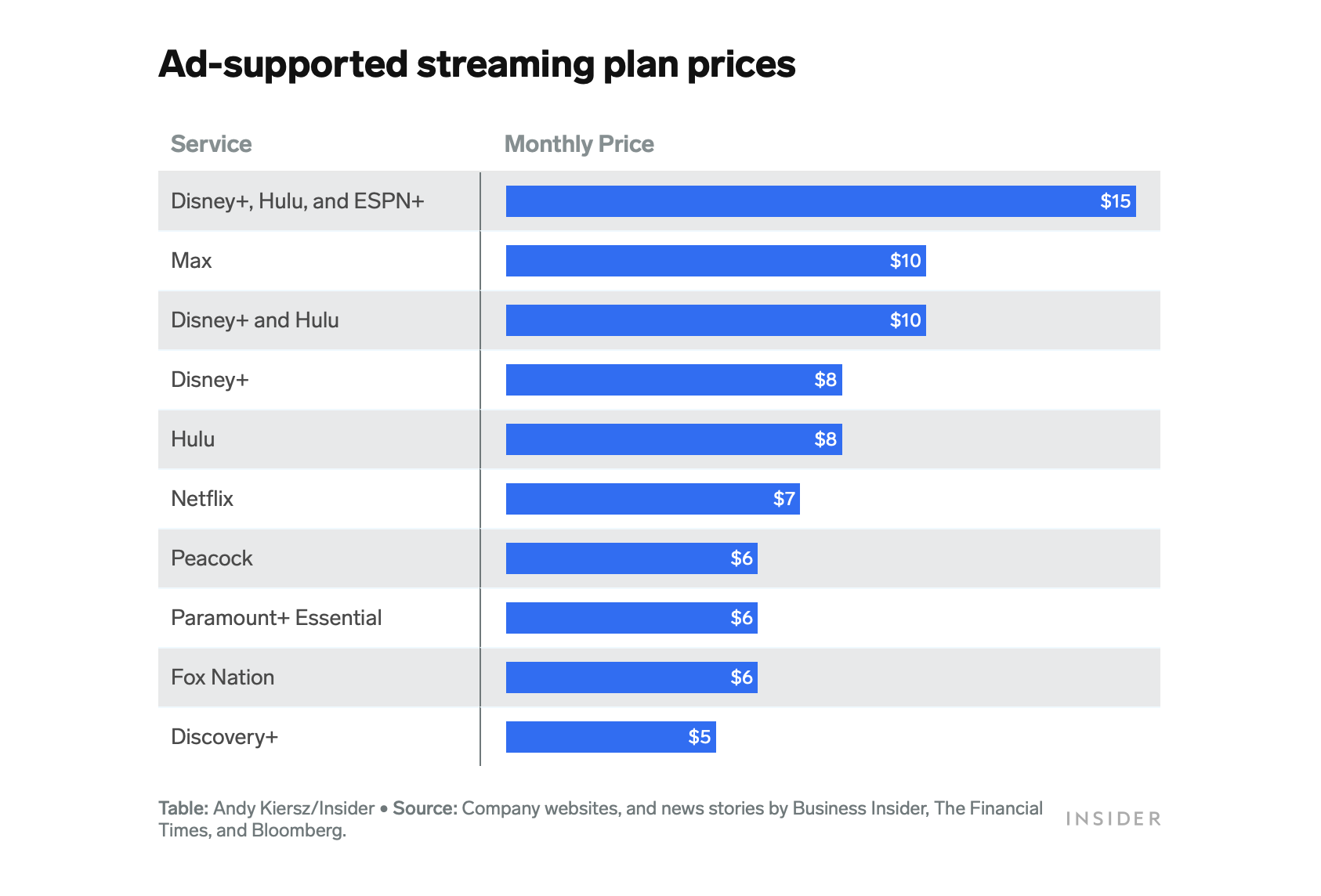The era of cheap streaming is over
Hollywood's biggest producers plan to raise their prices to compete with expensive cable shows that consumers abandoned nearly 15 years ago in favor of streaming services.

Americans have benefited greatly from the Hollywood era, when media companies churned out more programming than ever before at a fraction of the cost of traditional television. But that may soon come to an end.
Netflix, Disney, Paramount and Warner Bros Discovery have been under pressure from Wall Street investors to raise prices. After the adjustment, the top streaming services in the US cost an average of $87 a month compared to $73 in 2022, while the average cable TV price here is $83 a month.
Specifically, Disney increased its service prices for the second time in a year, with the monthly cost for the ad-free plan being $13.99 (up $3) from October 2023. Netflix has dropped its basic ad-free plan for $9.99 in favor of a $15.49 plan.
“From a business perspective, this is the path that streaming will have to take, and prices will have to go up,” said David Rogers, a professor at Columbia Business School and author of The Digital Transformation Roadmap.
Ride-hailing services are as expensive as traditional taxis
In the US, prices for ride-hailing services like Uber and Lyft are approaching those of traditional taxis.

Steven Levy, Editor-in-Chief of Wired (a monthly technology magazine in the US) had to pay $51.69 (over 1.2 million VND) for a "ride", about 4.7 km long from the center of New York City to the West Side area to meet Uber CEO, Dara Khosrowshahi. Notably, when asked, the head of the ride-hailing company estimated the cost of the trip to be only about $20 (about 470,000 VND).
A similar change has occurred with Lyft, where the cost of using the service for the same distance is approximately the same as what users would pay for a taxi. Not to mention, customers can now book taxis through the app, similar to Uber and Lyft. So what are the benefits of these services?
“Promise” in the clouds
Cloud services promise to bring cheaper and more secure computing power to businesses. While the flexibility benefits of being able to use “rented” computing power depending on actual needs are a concern, the price and security factors are raising many questions.

Salesforce, a provider of cloud-based marketing software, announced it would raise prices starting this month. CIO Magazine also reported that the cost of its Microsoft 365 cloud productivity suite is also increasing, as are services from Slack and Adobe. Meanwhile, AWS has started charging customers for IPv4 addresses, a popular and important Internet protocol.
Snap is a prime example of rising cloud costs. The startup decided not to develop its own infrastructure, but instead outsourced computing to a third party.
In the five years since its launch, Snap has spent $3 billion on cloud services from Google and AWS, the company’s second-largest operating expense after personnel.
“While cloud computing may hold promise for companies in its early stages, the pressures it creates will increasingly eat into profits as businesses scale and growth slows,” venture capital firm Andressen Horowitz wrote in a blog post. “There is growing attention to the long-term cost implications of cloud.”
(According to Insider, FT)
Source
























![[Photo] National Assembly Chairman Tran Thanh Man visits Vietnamese Heroic Mother Ta Thi Tran](https://vphoto.vietnam.vn/thumb/1200x675/vietnam/resource/IMAGE/2025/7/20/765c0bd057dd44ad83ab89fe0255b783)














































































Comment (0)